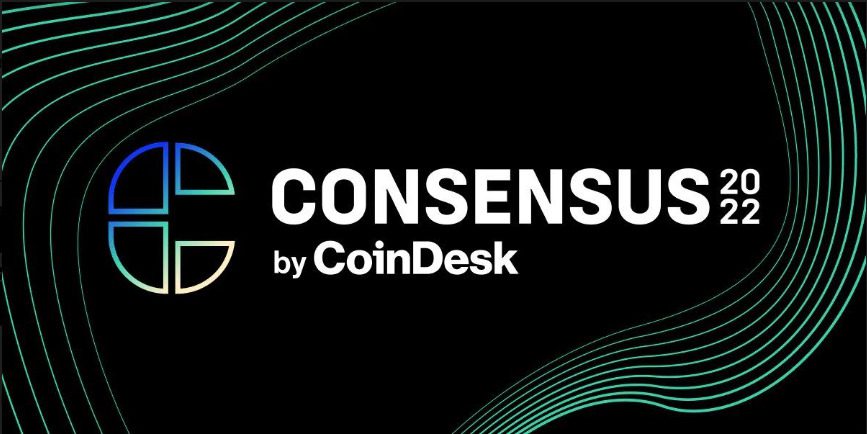Interoperability was one of the hottest topics at the Consensus 2022 conference in Austin, Texas, in early June. Connecting the world’s blockchains attracted discussion from executives at top projects such as Polygon, Cosmos, Akelar, We Meta, and up-and-coming layer -1 scaling solution, UniLayer Network.
Indeed, the consensus at Consensus seemed to be that interoperability has become a critical objective as we move toward a decentralized Web3 future.
As part of the four-part series on scaling the multichain ecosystem, Sandeep Nailwal, Co-Founder of Polygon, noted the importance of linking different blockchains to improve blockchain efficiency and expand networks.
This was echoed by Nailwal’s fellow panelists Billy Rennekamp of Cosmos, Nate Hamilton of Moonbeam, and Galen Moore of Axelar, all of whom emphasized the need for a fully interoperable cross-chain ecosystem if Web3 is to become a reality.
Interoperability was also a key issue among thought leaders in the burgeoning metaverse space, where executives lamented the inability to move NFTs from one virtual land to another.
Winston Robinson, CEO of We Meta, highlighted the comparatively small number of users in the global metaverse – noting that it was less than the number of attendees at the Consensus conference. He added that interoperability would be one of the keys to unlocking growth in this area.
First step Bitcoin, second step interoperability
During a session entitled “The Cross-Chain Future,” on June 8, UniLayer Network highlighted many of the same issues. Announcing the launch of its testnet, the firm says it is proposing a new solution for cross-chain interoperability, which it has been developing in stealth for a year.
Alex Belets, CEO of UniLayer Network, explained the potential of interoperability.
“The first step was to create Bitcoin. The second important step was the establishment and support of smart contracts. Interoperability is the next major step: we need to achieve concurrency. Every project and every chain has unique features, which are important. And we want to use them together in order to create some bright new projects,” Belets noted.
There are still issues with regard to merging features from different sets of networks, however, Belets pointed out. “And it will be like a nightmare because it will cost too much and be incredibly hard to maintain and to keep it secure and safe.”
For now, Bell thinks enabling data transfer from one chain to another should be the objective.
UniLayer Social Media manager Reynand Otida put it another way: “There’s a bubble in Cosmos, there’s a bubble in Ethereum – each chain has its bubble. We need to burst all these bubbles and create one big bubble for the entire industry.”
Interoperability from the inside-out
At the moderator’s request, UniLayer CMO Nikita Marin set out UniLayer’s unique approach to interoperability.
“There is a layer-1 blockchain: a foundational layer for all other integrated chains. So our solution embeds master notes in every blockchain that we interact with, and these allow us to layer networks to validate all transactions between chains natively on our own chain. That’s why we’re building a layer-1 solution for these. This solution is the beginning of the omnichain future. And we’re really excited to be here.”
It’s a question, Belets added, of going physically to another chain and injecting nodes of that chain on your own. “You have to be in the other chain, or the data from it isn’t accessible, of course. Inject nodes from the other chain inside your own. And then develop the logic to process it.”
Belets insists: “When we transfer data from one chain to another based on level one logic, it means that each data movement will be treated as a transaction after reaching consensus, and this is something I really want you to keep in mind. This is what I mean when I talk about native integration.”
While the technicalities involve going to the C++ level, Belets says, the concept is really that of having a single smart contract.
“Yes, just one smart contract. It will allow us to develop it further and faster, to be more cost-effective, and pay much less on every transaction because it collects all the data in one place. And it is really easy to implement. So it will be expanded and developed much faster, and adopted rapidly by merchants.”
Building bridges
What makes UniLayer Network right for this kind of integration? Marin explains: “We provide the infrastructure level, we make them more secure, we make them cheaper, we make them faster for other solutions. And that’s because we are building our infrastructure on C++. But we also store the whole memory of different chains inside of ours. So we are easily integrated and integrating with different chains and different partners.”
Belets said the team is already working on layer-1 integration with Cosmos and Polkadot. “We already started conversations with a few very important interoperability providers, because we work in different fields, we are not solving, for instance, problems with liquidity pools itself, they did an amazing job already. And there is no reason to be competitive here. We can provide technology for them as well.”
Along with the UniLayer Network testnet, Belets also announced the launch of a public forum for developers where they will have the opportunity to “feel” the data and receive an MAO response (data processing status report). He said: “We have the binaries and the configuration and explanation. Developers can run it; they can receive test tokens and try it.”
Intense investor interest
“But we have even more exciting things going on,” Marin added, hinting at investor interest and upcoming funding. “We have opportunities provided by cross-chain interoperability to create something entirely new because we’ve seen securities trading features in different networks, and we know how to connect them.
“And even more than that, if you’ve already spent a fortune to create some really nice project, for instance, on Solana, and you want to try out how it works, but you don’t have so much time right now. Suppose you could run Proof-of-Concept on another chain? We can contain an actual implementation; you will just reference the already implemented project inside another chain. This aspect has many investors really interested in us, and we’re in seed talks.”
Reynand Otida summed up: “So the way I see it is that, when the blockchain evolution started 11 years ago, the question was: is the blockchain going to survive? But now, after more than a decade, the question now is how are we going to scale? Is crypto going to get connected?
“I think this is where UniLayer Network would tie them all together. The interoperability issue is getting more intense as the days go by. And it’s still in the very early stages. UniLayer provides not only the solution but also the infrastructure. This means that the future is very bright for blockchain interoperability and for UniLayer.”
UniLayer isn’t the only interoperability project attracting investors, either. In late March, Layerzero Labs – the firm behind interoperability protocol Layerzero – announced a $135 million seed funding round led by top venture capital firm Andreessen Horowitz. This takes the interoperability project to a valuation of $1 billion, demonstrating the huge appetite that exists among investors for cross-chain solutions.
Indeed, as was demonstrated at Consensus 2022, interoperability is an issue that affects every corner of the blockchain ecosystem. From decentralized finance to the metaverse, the current lack of cross-chain capability is negatively impacting the growth and development of a vast array of Web3 projects, and many are searching for a solution.
Thankfully there is no lack of projects working to deliver that solution. And, as demonstrated by UniLayer, many are becoming more and more innovative. As the industry enters what could be a very long bear market, we look forward to watching the interoperability projects that will use this time to build. The results will no doubt be the infrastructure that will underpin the new interconnected Web3 ecosystem.



































